This post is comprised of different sections
Take a look at our review of Schism!
Learn more about squaring the circle and alchemy!
This post is comprised of different sections
Take a look at our review of Schism!
Learn more about squaring the circle and alchemy!
Band: Tool
Members: Danny Carey, Adam Jones, Maynard James Keenan, Justin Chancellor
Album: Lateralus
Length: 6m 47s
Genre: Progressive metal
Year: 2001

Our rating

Your rating
When evaluating a particular musical composition, there is normally several aspects to take into consideration: lyrics (if any), originality, compositional complexity and importantly, how the different musical elements fit together.
Within the genre of progressive metal, one of the bands that immediately pops into my mind which is capable of delivering all that is Tool.
Even though I enjoyed all of Tool’s albums, Lateralus stands, in my opinion, head and shoulders above all others. The phenomenal and complex instrumentation coupled with expressive lyrics is unprecedented.
I cannot count how many futile attempts I made at finding another band that could trigger a similar climax in me; in the end I resigned to the obvious – no band is quite like Tool!
In this article, I will go to great lengths to try to interpret Schism, the first single of the album Lateralus, which, arguably, epitomizes Lateralus’ mysterious realm.
If you know your way around music theory, you will immediately appreciate that this song is something of sui generis (see this excellent musical analysis video on Schism, which breaks this piece down for you).
I have been learning music theory for over 20 years now, and I still cannot get my head around some of the nuances in Tool’s compositions.
The instrumentation is undeniably challenging (particularly Danny Carey’s excellent drumming), and the ever-changing and unusual time signatures are mind-blowing, which brilliantly match the poetic expression of the lyrics.
Despite the unusual combination of musical elements, the song flows naturally, and there is not a moment in which we feel it is “out of place” – the pieces really just fit!
I must say that Schism completely altered the way I perceived music, in that it awakened me from the stupor of a naive and downright tasteless appreciation of music – you would drown in your own tears if you knew what my music preferences were prior to Schism.
The memory of listening to “Schism” for the first time is as clear as that when I lost virginity – I’m not joking!
It was sometime in 2001 and I was watching some MTV top music charts hosted by the intelligent, funny and beautiful VJ Joanne Colan (yes, yes, I might have had a little crush).
I still vividly remember how she described the song, emphasizing the originality of the bass playing the main motif, which is so preponderant throughout the entire song.
Honestly, I knew little about Tool back then – I was really just watching the show because of the VJ – but, my oh my, was I in for a treat.
The next day, I rushed to the nearest CD shop and purchased a copy of the album – a physical album, can you imagine that! – and on that same day I listened to the album from beginning to end a few hundred times. I was in awe…
The music video of “Schism” is disturbingly engaging. Two alien but rather human-like figures of seemingly opposing sexes appear to be trying to communicate with each other.
One of them is relatively passive, and is the subject of inspection of the more active figure of the two. After a series of bizarre interactions with goblins, the two figures fuse, and form a rather creepy version of Gogeta.
Like most of Tool’s videos, you won’t see band members (or any humans for that matter) playing or posing in the background with a fake absent-minded look.
No. This video has something primeval in it, perhaps showing you the importance of one of the most fundamental human needs: communication.
Whether you prefer to listen to classical, pop, rock or folklore music, it would be foolish to disparage the contribution of the album “Lateralus” to the music industry.
Schism is deservedly the embodiment of the album, and, in my opinion, ranks among some of the best metal songs made in this century. For that reason, I am giving it a rating of 4.
As with most of Tool’s lyrics, the text of the song is very cryptic, and few would disagree if I called the music video outright bizarre. Given its obvious surrealistic nature, I am giving Schism a Bizarrometer score of 4.5.
If you haven’t yet done so, check out the music video. Also check out the lyrics below.
I know the pieces fit ’cause I watched them fall away
Mildewed and smoldering, fundamental differing
Pure intention juxtaposed will set two lover’s souls in motion
Disintegrating as it goes testing our communication
The light that fueled our fire then has burned a hole between us so
We cannot see to reach an end crippling our communication
I know the pieces fit ’cause I watched them tumble down
No fault, none to blame, it doesn’t mean I don’t desire
To point the finger, blame the other, watch the temple topple over
To bring the pieces back together, rediscover communication
The poetry that comes from the squaring off between
And the circling is worth it
Finding beauty in the dissonance
There was a time that the pieces fit, but I watched them fall away
Mildewed and smoldering, strangled by our coveting
I’ve done the math enough to know the dangers of our second guessing
Doomed to crumble unless we grow and strengthen our communication
Cold silence has
A tendency to
Atrophy any
Sense of compassion
Between supposed lovers
Between supposed lovers
I know the pieces fit
According to the Oxford Learner’s Dictionary “Schism” is defined as “a strong disagreement within an organization, especially a religious one, that makes its members divide into separate groups“.
Given the emphasis on “religious”, it would make sense that this song was about some religious happening.
In fact, there has been some suggestions that the song refers to the events of the Great Schism of 1054, a significant historical episode that culminated with the separation between what is now the Catholic and the Orthodox churches.
Notwithstanding the definition emphasis on “religious”, I am not certain that the song is actually about a religious divide at all.
Indeed, many secular interpretations of the song abound. For example, one interpretation revolve around the idea of communication. Tool make several references to pieces not communicating, which, to some, is suggestive of some kind of miscommunication between two people, perhaps a couple.
More relevant to the present article, Tool members are also known for their interest in occult symbols and sacred geometry.


In particular, Musicologists and Tool fans have identified references to alchemical concepts in some songs in Lateralus. In fact, there is even the distinct possibility that the whole Lateralus album could actually describe a sort of alchemical journey.
But I’m jumping the gun here – I’ll review and explain the other songs in future posts, so you will see what I mean.
I interpret Schism as a metaphor for the psychic barrier that exists in our minds which is a deterrent to reach a stable personality. According to this view, the song describes certain necessary steps which are needed to bring together the two separate halves of our nature.
In Alchemy, these steps are metaphorically represented by the “squaring the circle”.
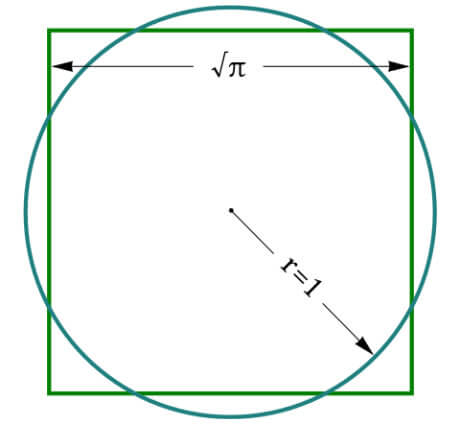

While I was ferreting out different interpretations of Schism, the one that caught my attention was an interpretation from Dig Interpretations by Jim.
The main idea that Jim proposed in the post was the alchemical concept of “squaring the circle”. I’ll pick this idea and will develop it further here.
There are two uses for the term “squaring the circle”: one mathematical and one spiritual. I’ll start off with the mathematical use (for you numberphobes, please bear with me for a moment, and you’ll see the relevance).
In geometry, “squaring the circle” is described as the ancient Greek problem of creating a square with the same area as a circle. Sounds simple enough right? But wait, there are rules.
You cannot use modern methods to do this, because when the problem was formulated back in ancient Greece, numbers could only be derived using lines and circles with the help of a compass and straightedge (Algebra, which is what is used in mathematics to solve these kind of problems, hadn’t been invented yet; see What is Algebra?).
So the question becomes: can you find a circle and a square that have the same area by only using a compass and a straightedge?
It turns out you can’t: squaring the circle using only a compass and a straightedge is an impossible problem.
To understand why, you’d need to have a fairly decent knowledge of Algebra and Calculus which is beyond the scope of this article.
For the present purposes, we will only mention that squaring the circle using a compass and straightedge requires you to construct \( \sqrt{\pi} \), which is impossible.
The area of a square is defined as \( Area\ of\ a\ Square = Side \times Side = s^2 \).
The area of a circle is defined as \( Area\ of\ a\ Circle = \pi r^2 \).
So, you’d need to construct a square so that \( Area\ of\ a\ Square = Area\ of\ a\ Circle \). In mathematical language, \( s^2 = \pi r^2 \).
When you move the \( ^2 \) above \( s \) to the other side of the equation, you get \( s = \sqrt{\pi} \cdot \sqrt{r^2} = \sqrt{\pi} \cdot r \).
So you unavoidably need to construct \( \sqrt{\pi} \) – this is impossible!
\( \pi \) is a really cool number. It’s irrational, which very loosely means it doesn’t really repeat, or, to be more mathematically precise, it cannot be expressed as a fraction between two integers.
0.5 is a rational number because it can be rewritten as a fraction between two integers (i.e., \( \frac{1}2 \)).
Even a number like 0.33333333… (the three dots mean that it goes on indefinitely) is a rational number because it can be expressed as \( \frac{1}3 \).
\( \pi \), however, is irrational because you cannot represent \( \pi \) as a fraction between two integers.
\( \pi \) starts with 3.1415926535897932384626433832795… and it continues without ever repeating a sequence of numbers.
Now, why is \( \sqrt{\pi} \) so problematic for the squaring the circle problem?
Remember the rules: you can only approach the squaring the circle problem using a compass and straightedge. The numbers you can derive using these rules are called “constructible” numbers.
The issue is that if \( \sqrt{\pi} \) is a constructible number, \( \pi \) will also need to be.
Alas, a mathematician called Ferdinand von Lindemann proved in 1882 that \( \pi \) is not an algebraic number (see What is Algebra?), and therefore it is not a constructible number (all constructible numbers must also be algebraic).
According to Wikipedia Algebra means “reunion of broken parts”. So, in a sense, it means taking something that is incomplete and make it complete.
Take this polynomial equation: \( x + 1 = 4 \)
The goal of algebra is to figure out what the unknown variables in equations are (like the variable \( x \) above). You have something you don’t know (variable \( x \)) and you use Algebra to figure out what it is (in the example above \( x \) is equal to 3, because 3 + 1 = 4). In Algebra you always need to keep one side of the equation equal to the other.
Algebra is very important in real life for describing and modelling things in the real world (like predicting whether an asteroid is likely to crash on Earth).
Algebraic numbers are numbers that cause a polynomial expression to equal 0.
Let’s say you have a number like 0.25. 0.25 is the solution (also called root) of an equation such as \( 100x – 25 = 0 \). Why? Because if you solve the equation for \( x \):
1) \( 100x = 25 \)
2) \( x = 25/100 \)
3) \( x = 0.25 \)
So 0.25 can be expressed in terms of an equation; that is, 0.25 is a solution (or root) to the equation \( 100x – 25 = 0 \).
Therefore 0.25 is said to be an algebraic number, because it causes a polynomial expression (the \( 100x – 25 \) bit) to equal 0.
You can pretty much come up with any number and you’ll see that it is always a solution to a polynomial expression.
Always? Well, no, not always.
It turns out that \( \pi \) is not the solution to any polynomial with integer coefficients.
It doesn’t matter if the equation is \( 1 +x = 1213x^2 + 48x -4 \), or whatever freaky equation you might conceive. There is simply no equation with integer coefficients in which \( x \) will equal \( \pi \).
Mathematicians have a name for a number which is not algebraic (like \( \pi \)). It is called a “transcendental number”! That’s a pretty darn cool name for a number: transcendental!
But, why transcendental?
It’s called transcendental because it transcends the mathematical tools (e.g., Algebra) that humans have created for building numbers and figuring things out.
As opposed to numbers like 10, \( \frac{12}{127} \) or \( \sqrt{2} \), transcendental numbers are numbers we haven’t really created. They exist everywhere in the Universe and we simply don’t have the tools or knowledge to build them.
Even if, after reading this, you feel like sticking your head in the toilet, you have to admit that’s pretty cool, heh?
Contructible numbers are numbers that can be constructed with a compass and straightedge in a finite number of steps. \( 10, 1302, \sqrt{2} \) are all constructible numbers.
Algebraic numbers contain all constructible numbers plus a few more. You can construct \( \sqrt{2} \) using a compass and straightedge, but you cannot construct \( \sqrt[3]{2} \) (cubic root of 2). So anything higher than a square root (\( \sqrt[3]{2}, \sqrt[4]{2}, \sqrt[5]{2} \) and so on) are algebraic (but not constructible numbers).
Both algebraic and constructible numbers are solutions to polynomial equations (check out What is Algebra?).
Transcendental numbers are numbers which are not solutions to any algebraic equation. Some examples of transcendental numbers are \( \pi, e \) and \( \ln 2 \).
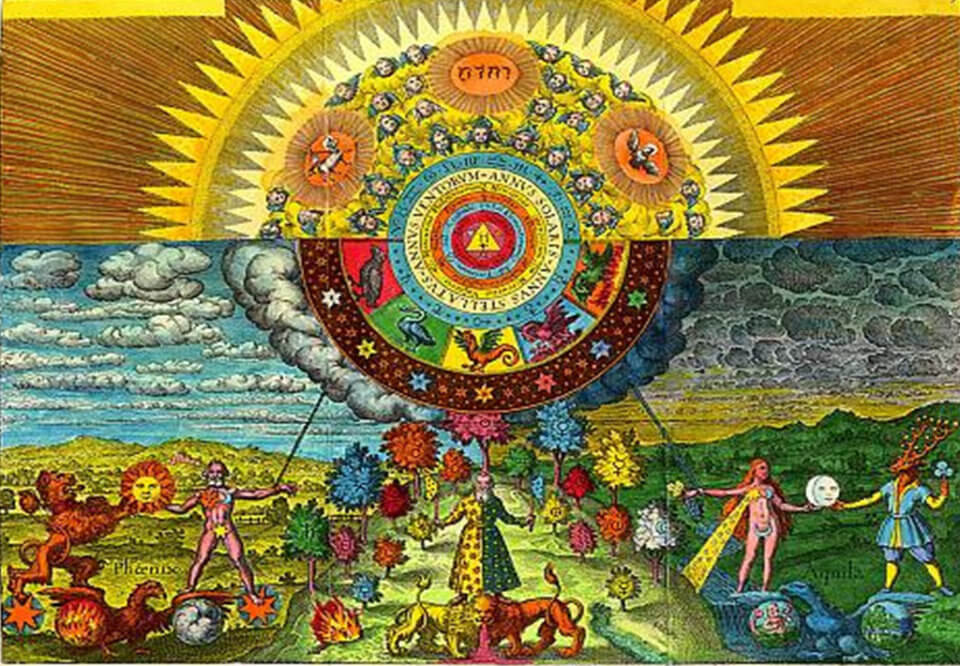
At some point in your life, you have probably come across the idea that Alchemy is all about transforming bare metals (e.g., lead) into gold.
Although it is true that this activity occupied the minds of a fair number of alchemists, most alchemy scholars believe this goal was meant metaphorically.
In fact, it would be more accurate to define Alchemy as the art of transformation: how to change one thing into another in order to perfect it.
The thing you are trying to perfect is irrelevant; it can be a metal, a stone, a body or even a mind. The only aspect that matters in alchemy is how one achieves this transformation.
Oftentimes, you will hear that alchemy has to do with transforming the properties within matter (physical alchemy) as much as it does with transforming one’s own mind (spiritual alchemy).

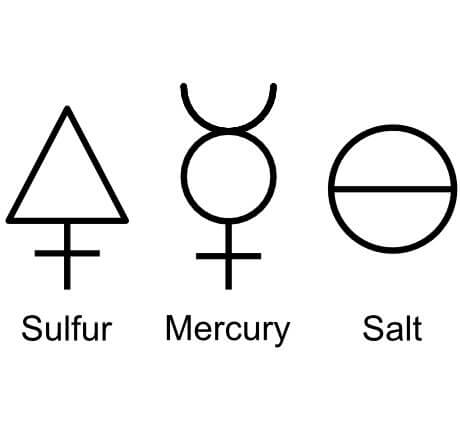
Alchemists believed that all matter originated from a primitive substance called “Prima Materia” or First Matter. Minerals, plants, animals, humans, all arise from interactions among the constituents of this elusive First Matter.
These constituents, which are the same in all forms of matter, are the Three Essences (Mercury, Sulphur and Salt) and the Four Elements (Fire, Water, Air and Earth). In this article, I’ll focus on the Three Essences (the Four Elements will be discussed in another article).
Now, in most cases, the material the alchemist is working with will contain impurities that render it imperfect.
The whole point of alchemy is to extract and purify the First Matter from the material, in order to create a better version of it (this is the Great Work of Alchemy).
With respect to the Three Essentials (Mercury, Sulfur and Salt), a critical mechanism for the success of that transformation is the interaction between Mercury and Sulfur.
Mercury and Sulfur are considered primordial opposing forces that are present in all matter. When you successfully unify the two, Salt is created.
So Salt is present at the beginning of the experiment (albeit in a corrupted form), which is then destroyed and dissolved to release its essences (Sulfur and Mercury), which are purified and recombined into a new, perfected Salt.
These Essentials should not be confused with the everyday elements of mercury, sulfur and salt that you are familiar with.
Instead, in Alchemy, these concepts are used metaphorically to describe certain properties of matter.
For example, Sulfur represents dryness, fiery, masculinity, whereas Mercury is linked to properties such as wetness, watery and femininity.
The whole process goes like this. Say you have metal “A”. Now you dissolve and break away all its physical properties, so that it yields its most fundamental essences (“First Matter”). Next, you modify these essences, so that you eliminate existing impurities, and isolate Mercury and Sulfur. You then mix up the properties of the metal that you consider “pure” (by mixing and fusing Mercury with Sulfur). This process effectively creates an upgraded version of metal “A” that contains the desired properties (i.e., Salt).
This is pretty much what alchemists did in the lab.
Even if you dismiss Alchemy as nothing more than a pseudoscience, alchemists’ experimentation have undoubtedly helped in the discovery of important chemical substances, such as alloys and alcohols.
In this sense, Alchemy has been considered the precursor of a complete scientific discipline – Chemistry.

Now, some alchemists transformed their products using chemical transformations (physical alchemy).
However, some used these alchemical ideas as metaphors for personal transformations as well – the kind of transformations you can apply to the mind (spiritual alchemy).
In the context of a personal transformation, Sulfur, Mercury and Salt are commonly referred to as Soul, Spirit and Body, respectively, but the idea is essentially the same.
Everyone of us contain a degraded version of these three Essentials within ourselves. By purifying them, we can be sure to achieve an optimal personal development.
Psychologically, the Soul represents our emotions, desires and willpower, whereas the Spirit represents our mental faculties, imagination and thought. The Body is our physical Self – the union of Spirit and Soul.
Because Spirit and Soul are opposing forces within us, the Body represents the resolution of these polarities in our psyche (conscious vs. unconscious, masculine vs. feminine, active vs. passive, etc.).
If you successfully create a Body, you will have attained a renewed personality, in which you are able, for example, to combine emotions with logical thinking, to integrate the unconscious with the conscious, to balance the active with the passive and so on.
During my research on the topics of Soul, Spirit and Body and their relationship to Sulfur, Mercury and Salt, it soon became apparent the amount of contradictory information that exists in the field.
Some authors appear to associate Sulfur with Soul and Mercury with Spirit, whereas others link Sulfur with Spirit and Mercury with Soul.
To add to the confusion, even authors that use the same association (e.g., Mercury as Spirit and Sulfur as Soul) tend to give distinct properties to Sulfur and Mercury.
Unfortunately, the more I scrutinized the matter, the more confused I became, so I finally decided to go with the original idea which I believe was formulated by Paracelsus: Sulfur is Soul and Mercury is Spirit.

You can view the Salt/Body as a perfected version of the material you started with (be it a chemical substance, a body or a mind), after you have cleansed all the impurities within it.
There is a name for this final product: the Philosopher’s Stone.
Unsurprisingly, the Philosopher’s Stone takes different meanings depending on what you are attempting to transform.
A popular quality attributed to this Stone was its power to transmute base metals into gold. Others believed that it constituted a key ingredient for the preparation of an elixir that could heal all diseases and bring about immortality.
Fair enough, but what does all of that have to do with the mathematical problem of squaring the circle I described above?
It appears that alchemists took the mathematical problem of squaring the circle as a metaphor for achieving something that is seemingly unattainable.
In Alchemy, “squaring the circle” refers to the idea of going through the several necessary stages in order to create the Philosopher’s Stone.
Those stages involve breaking down the Prima Materia into the primordial elements (the three Essentials and the four Elements), and subsequent recombining them into a purified element (not unlike what we do with mathematical equations).
A good place where we can see this symbolically is in an illustration from the Atalanta Fugiens (an emblem book created by 16th centurty alchemist Michael Maier).
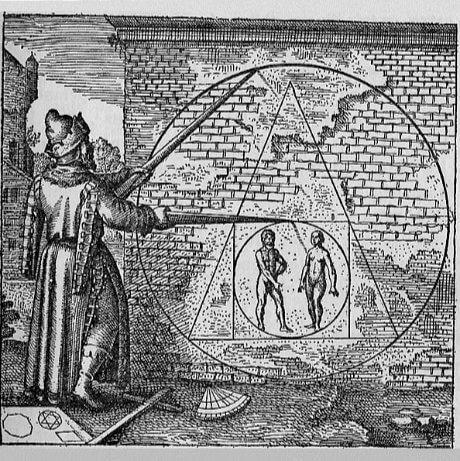
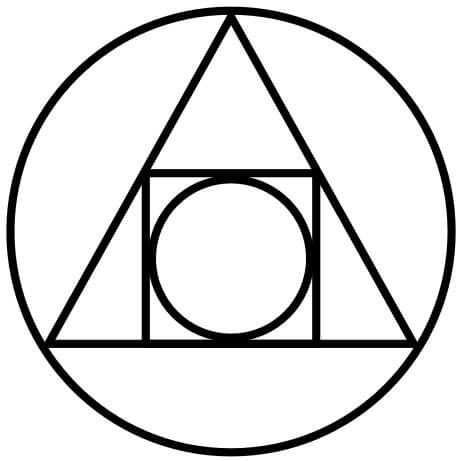
In this illustration, a man uses dividers to draw a circle around an inner circle. The inner circle is enclosed within a square, and you see two figures inside the square: a man and a woman.
Interpretation of this drawing goes that the man and woman represent the two halves of our human nature. The inner circle that encircles them represents the union of masculine (Soul) and feminine (Spirit) energies.
The square and the triangle represent the four Elements (Earth, Fire, Air and Water) and the three Essentials (Soul, Spirit and Body) respectively, which are finally united into the Philosopher’s Stone (the outer circle).
So the alchemical “squaring the circle” describes this whole process from the Prima Materia up to the birth of the Philosopher’s Stone.
The quest to “create” the Philosopher’s Stone consists of seven steps (the Great Work of Alchemy or Magnus Opum).
These steps were not only described chemically (how physical substances were refined and purified), but also psychologically.
In this article, I will mostly focus on the psychological description, since it is the most relevant for the interpretation of Schism.
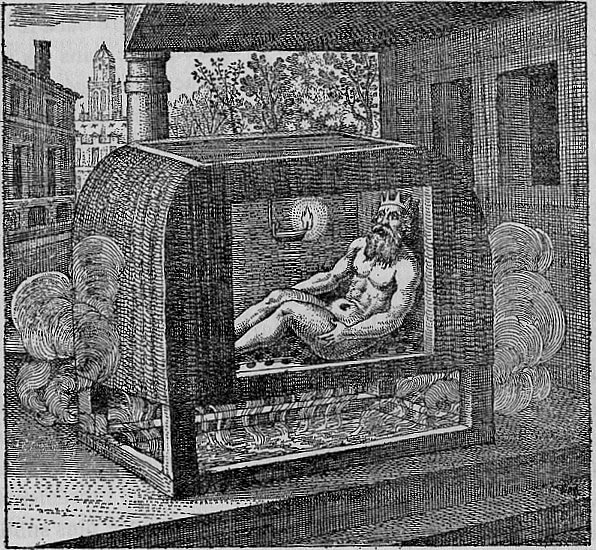
Chemically, calcination is the process of heating solids at high temperatures in order to bring about thermal decomposition.
In other words, if you calcinate a substance, it will be disintegrated into simpler, more basic constituents (e.g., calcinating limestone will allow you to split off lime from carbon dioxide).
Psychologically, as we grow up, our self-esteem might decline. We might become dissatisfied with our careers and brood over personal embarrassments and failed relationships. We tend to lose contact with our true self (the spiritual self), as we begin to build a false identity in response to pressures from our family and society at large. In alchemical terms, we build impurities – superfluous behaviour that restricts our personal growth.
In the process of Calcination, we begin to realise that superfluous matters present in our lives are not important. We start to let go of previous material and emotional attachments that are in the way of personal growth.
So, the process of Calcination destroys our false identity, so that we can find out what our true purpose in life really is.
Needless to say that this is a tough and shocking period in our lives, because we will feel as if we were being thrown into an abyss of darkness and burned to ashes.
We might get depressed, angry, feel lost and don’t really know who we are anymore.
Therefore, many people avoid this process, as maintaining the status quo is the most comfortable and easier thing to do.
Example: Let’s say that you are trying really hard to move up in your job. Perhaps because you have always felt you needed to achieve a certain status within the field you are working in. You might well be successful, but perhaps, along the way, you might neglect other sides of yourself, for example, your emotional life.
It might also turn out that that after you reach the much-wanted position, the job doesn’t completely fullfil you. Why is that? Maybe that aim had been fueled by your parents’ overly high expectations that always wanted you to be that particular person. So, you realise that you cannot go on like this and need to let go of this life. It will be hard to let go of a life and identity that you have been building for years. Ultimately, however, you understand that this is the only true way to move forward.

Dissolution is the next step of alchemical transformation.
Chemically, this phase is characterised by taking the ashes from Calcination and dissolve them in water.
Pychologically, this means that once we have identified and broken down the corrupted structures of our personality, we begin to identify less with our false ego.
Here our conscious mind relaxes and allows unconscious contents to surface.
Unconscious material might include, for example, projections. Simply put, a projection is the displacement of negative qualities or feelings onto other people.
Example: We might feel very inimical towards a co-worker who is doing very well and was recently promoted. You think he does not deserve that position, because you feel he is just sucking up to the boss. But perhaps the reason you get so worked up with him is because you are a suck-up yourself. Since you see being a suck-up as a negative trait, you unconsciously project it onto your co-worker. People often project their own negative feelings or thoughts to others so that they avoid confronting themselves with these discomforting traits.
The process of Dissolution allows us to identify these kinds of unconscious behaviour.
Once we realise our unconscious projections (as well as other faulty traits), we become aware of how our behaviour might be influencing our relationship with ourselves and others.
If we manage to bring this unconscious material to light, then we are on a good way to integrate the unconscious into our personality.
In this stage we also attempt to resolve painful experiences that had been repressed in the past.
We might find innovative ways to deal with the emotions triggered by these grieving events and redirect this energy towards creative endeavors.
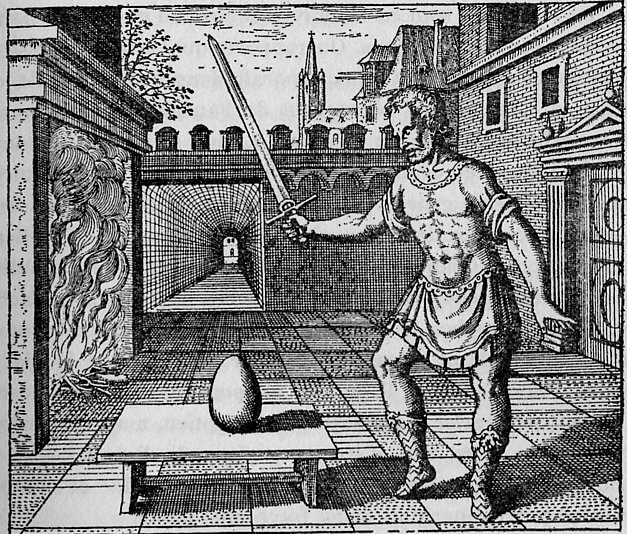
Chemically, this refers to the isolation of the components of Dissolution, resulting in the separation of pure from impure material.
Psychologically, after Dissolution, you are able to observe which aspects of yourself are authentic and worth preserving (purities) as well as unconscious elements that are in the way of personal growth (impurities).
The goal of separation is to retain everything that is genuine by removing it from contaminating influences (i.e., separate the good stuff from the bad stuff).
Thus, we sift through all the unearthed unconscious material from Dissolution and decide what is worth preserving.
During this stage, we don’t resort anymore to ignoring dealing with particular difficult feelings because it’s easier thing to do. No! Even if it’s uncomfortable to deal with, we still do and we acknowledge that. This allows us to assess how we truly feel.
Example: Let’s say you realise that you really are a suck-up and this allowed you to move up in your career. Upon reflection, you know this is not fair, and certainly not the way to earn respect. So you acknowledge being a suck-up is a bad quality that you should exclude from your personality. In contrast, you might find that you repressed feelings of compassion, because your job required you to pass off as a tough guy. However, being a compassionate person may actually make you a better person (as well as more likable) so you would try to integrate that into your personality. In the Separation process, you actively separate the wheat from the chaff, and notice what unconscious elements are worth preserving (like being compassionate) and the ones that need purging (like being a suck-up).
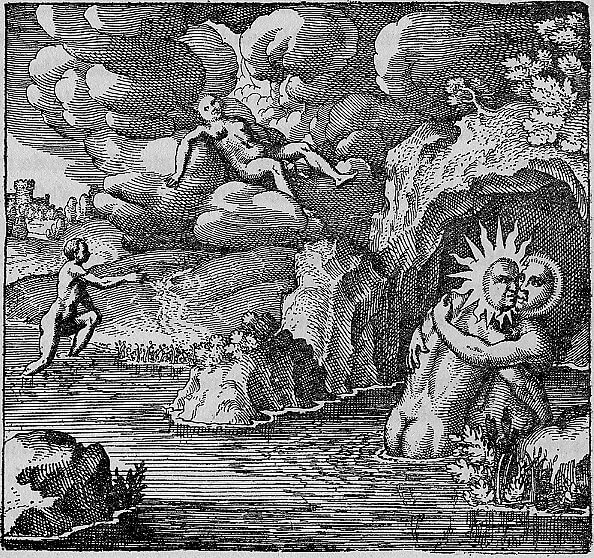
Chemically, conjunction refers to the recombination of those authentic elements saved during Separation.
So, after Separation you have achieved a certain level of purification, which leaves you with those qualities that you deem authentic. We must now recombine these elements into a whole new personality – this is the operation of Conjunction.
It is a critical, and arguably, the most important stage in the Alchemical journey. It is so important that alchemists have a special name for it – the “Sacred Marriage”.
The Sacred Marriage of Conjunction is the marriage of the masculine and feminine sides within yourself.
As I described earlier, the Soul governs the emotions whereas the Spirit represents mental faculties and thought (note that there is not an agreement here, see above).
If you merge these two, you will not only become aware of your emotions, but you have learned to integrate them in the process of decision making.
In other words, you will make decisions in life that are more aligned with with you true feelings and emotions.
Needless to say, Spirit and Soul need a certain level of purification to actually unite. If contaminants or impurities are present, a new personality (or Body in alchemical jargon) will not be produced. There are similarities with the notion of integrating your Anima/Animus in Jungian psychology.
Example: So, after much contemplation, you successfully identified the most authentic characteristics worth preserving. What remains to be done is to unite them. Let’s say you have decided not to be a suck-up anymore and also realised that you need to show more compassion towards others. So you decide to quit your job, as your current work environment is not conducive to pursuing your goals. You look for a new project that allows you to put your newly developed feelings of compassion to work. Perhaps a job which allows you to improve the quality of peoples’ lives. You say what is truly in your mind even if it does not meet your bosses’ expectations. What is important is the well-being of other people and not ingratiating yourself with your boss for a quick ascension in the career ladder. Sometimes you get into innocuous disagreements with your boss, and the paycheck is certainly lower than in your previous job. However, this new You feels reinvigorating!
There are at least 3 further stages in Alchemy that are required to create the finished Philosopher’s stone, namely fermentation, distillation and coagulation.
However, I’ll stop at the Sacred Marriage of the Conjunction process as this is the critical point where the Philosopher’s Stone is born (at least a proto-version of it).
Separation and Conjunction (Sacred Marriage) are the two processes that combined comprise the White Phase in Alchemy. I see Schism as an allegory of this stage.
Okay, so let’s start the analysis of the song. I’ll interpret the song line by line, and, when relevant, I’ll point you to specific moments in the music video.
I know the pieces fit ’cause I watched them fall away
I know the pieces fit could relate to the idea that all matter, including a human mind, consists of the three Essentials (Body, Spirit and Soul), which are initially split for the purpose of purification, but can be re-united again.
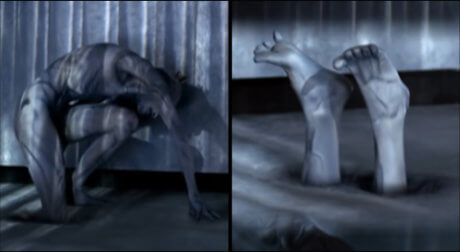
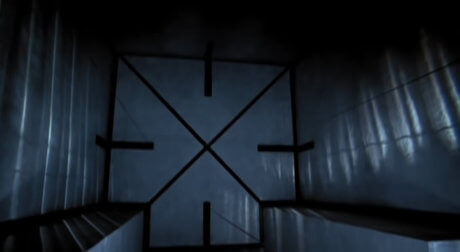
I watched them fall away might refer to the process of Calcination and Dissolution, in which the original corrupted matter is desintigrated to release its essence, so that it can be purified and reconstituted into the perfect new Body at the end of the experiment.
Naturally, we are witnesses of this whole process (as it happens in our minds), hence the emphasis on “I watched”.
Mildewed and smoldering, fundamental differing
Mildew is a kind of fungus that could make you sick. So I believe that “mildew” here represents the impurities of the First Matter. Smoldering means to burn slowly without a flame.
An influential alchemist, Paracelsus, said that fire is the agent of transformation and, as such, it possesses the power to make the impure pure.
So perhaps this line means that matter is initially corrupted and that the energy that is necessary for transformation remains blocked (it burns without a flame).
Differing means dissimilar (i.e., not the same as each other ). Fundamental differing therefore could refer to the idea that the fundamental elements that make all matter are always opposites (e.g., masculine/feminine; passive/active; etc.).
Note how there appears to be two figures of seemingly opposing sexes. These figures could present the masculine and feminine aspects of our psyche.

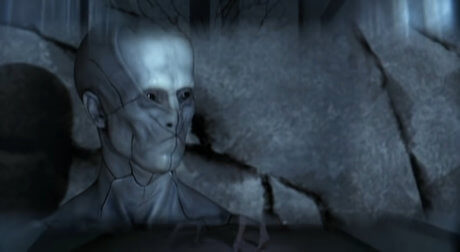
Pure intention juxtaposed will set two lover’s souls in motion
Juxtaposed means to put things or people together, in order to show a new relationship between them. I believe this is a clear reference to the idea of joining Soul and Spirit to create a new Body.
Two lovers’s souls in motion might refer to the dance of Sulphur and Mercury which represents the feminine and masculine parts of your personality.
In Alchemy, Sulfur and Mercury are often depicted as the King and Queen, respectively, who are indeed lovers.
Disintegrating as it goes testing our communication
The Great Work of Alchemy is a cyclic and continuous process. It doesn’t happen all at once, and often requires many purification attempts.
My interpretation is that “testing our communication” could reflect the idea that purification requires finding new ways of the Soul and Spirit communicating by continuous disintegration and unification.
With material substances this is clear: you try out a unique combination of the existing elements and/or their proportions. If that does not produce the desired result you try again using a different combination of the constituent elements and/or their proportions.
The same applies to the psyche: perhaps you have failed to accept your darkest secrets and chose to repress them and try to move on with your life. If so, the conjunction process will not result in a purified Body, and it will fail.
To succeed, your self needs to be broken down again and again, until it is sufficiently purified for the merging of opposites to occur.
The light that fueled our fire then has burned a hole between us so
We cannot see to reach an end crippling our communication
Note the shape the female figure is drawing with the head of the male figure: it’s a spiral.

Spirals are a significant form in many religions and traditions including Alchemy. It’s a symbol of change and development.
The path to individuation is a turbulent one, but necessary. I equate this scene as a spiral journey around a centre which we cannot yet see, because the different aspects of ourselves are not yet fully integrated (they are not communicating).
Crippling means to damage or harm somebody/something really badly. So we need to overcome this crippled communication, and that is done by purifying and integrating our opposing forces.
I know the pieces fit ’cause I watched them tumble down
No fault, none to blame, it doesn’t mean I don’t desire
To point the finger, blame the other, watch the temple topple over
This could refer to the idea that after dissolution, you realise your projections like blaming the other.
Remember that a projection is simply an innate defense mechanism that allows you to cope with your own feelings.
You might be blaming someone for being selfish, when you are the one that is actually selfish. However, this thought is so unacceptable to you that you unconsciously project it onto someone else.

One of the main reasons Conjunction often fails, is because we neglect our own projections. Every person will eventually need to come to terms with his/her own projections, and that means acknowledging those aspects of ourselves that we dislike.
Remember, to continue the path to individuation we need to purify our essences (Spirit and Soul) before we can proceed with the Conjunction (or union of opposites).
To bring the pieces back together, rediscover communication
As already mentioned, all matter consists of the same building blocks (Sulfur, Mercury and Salt) which are broken down and reunited (bringing the pieces back together) after purification.
Rediscover communication is the new understanding of the different aspects of yourself. This process of rediscovery can only happen if you become aware of your own projections.
Bringing the pieces back together could be an allusion to the idea that the constituents of matter need to be recombined into a new, better composition.
The poetry that comes from the squaring off between
And the circling is worth it
Finding beauty in the dissonance
As with Jim’s interpretation, I also think this could be an allusion to the squaring the circle problem.
In the alchemical context, squaring the circle is a metaphor for the journey towards attaining the Philosopher’s Stone, which in mental or spiritual alchemy represents a perfected personality.
So, of course, it is worth to square the circle, as this will makes us better human beings.
Dissonance means a lack of agreement between things. Squaring the circle allows you to find that agreement, in the sense that opposite and dissonant qualities (e.g., positive and negative, feminine and masculine, etc) are united.
Once this unification is successful you will find beauty in those opposites, as you realise that their union culminates in a transcendent higher form – the Philosopher’s Stone.
There was a time that the pieces fit, but I watched them fall away
Mildewed and smoldering, strangled by our coveting
Coveting means to want something really bad but which belong to someone else.
To me, strangled by our coveting suggests jealousy of others’ possessions, which is, of course, a negative emotion, an impurity.
So, this could reflect the idea that you need to purge these negative aspects of yourself (impurities), in order to be able to continue the path to individuation.
I’ve done the math enough to know the dangers of our second guessing
I believe second guessing here means this sense of insecurity people feel when they ruminate over whether a decision they have just made was really the best one.
Second-guessing is dangerous as it could lead to long-term anxiety, lack of confidence and assertiveness.
For example, let’s say you have a tendency to second-guess yourself regarding every single romantic relationship you have or have had.
You might end up being constantly concerned about the future of your relationship and test your partner every chance you got. Surely you agree this is not the healthiest mindset to be in.
Instead of second-guessing, you should base your decisions on the basis of self-reflection and introspection – not on the concern of success vs failure.
To stress the point: there should be communication with the polarities in your mind – the conscious and the unconscious, the feminine and the masculine, the passive and the active, and so on.
Doomed to crumble unless we grow and strengthen our communication
Conjunction often crumbles if contaminants are still present or if the dance of Soul and Spirit fails. This requires strengthening the communication between Spirit and Soul so that your emotions are well aligned with your thoughts.
Communication is key here. This applies to polarities within ourselves: the feminine (Spirit) and masculine (Soul) aspects within yourself. Spiritual Alchemy is all about integrating the opposing forces that inhabit your psyche.
Remember that in terms of personal development, Soul represents our emotions, whereas Spirit our thoughts.
Also, remember when I mentioned that in Alchemy, Spirit tends to be associated with the feminine principle, and alchemists believed it acted like kind of a mediator between Soul and Body.
Well, it seems that fits quite well here. In the music video, we see the female figure (Spirit) attempting to galvanise a very passive male figure (Soul) into action.


When the female figure finally succeeds in animating her male counterpart, the two begin moving in all fours and balancing their heads in synchrony. I interpret this ritual as the dance of Soul and Spirit that leads to the Sacred Marriage.
Moreover, shortly after the synchronous dance, we see the female figure retrieving a block from the male figure, containing little goblin-like beings.


These goblins might reflect existing impurities – bad thoughts that limit our personal growth.
The female figure actively helps to excommunicate those impurities from the male figure.
This is another possible hint that it is the Spirit (the feminine) – the life force – that moves through the Soul (the masculine) and gives it life.
cold silence has
A tendency to
Atrophy any
Sense of compassion
These lines could be related to the idea that, in alchemy, fire is a determinant agent of transformation.
Fire produces heat which is the opposite of cold. Cold silence could refer to the lack of initiative which stagnates transformation. There needs to be fire to set off transformation.
If you don’t adopt an active mindset to begin the process of transformation, it will be impossible to reach a new spiritual self, in which your feelings of compassion towards yourself and others are fully developed.
Between supposed lovers
Between supposed lovers
Between supposed lovers could relate to the idea of the Sacred Marriage, which is not a physical marriage but rather a marriage between opposing aspects of ourselves (feminine and masculine).
So they are “supposed” lovers because they are not lovers in the real sense of the word, but opposing forces inhabiting your psyche.
Also, remember, that Conjunction is not the final stage of the Great Work. If Conjunction is successful, it will create a proto-version of the Philosopher’s Stone, but it is not yet a Philosopher’s Stone.
In the music video, we see the goblins attempting to attack the female figure. However, she remains impenetrable, perhaps signifying that Spirit has reached the level of purity necessary for Conjunction.

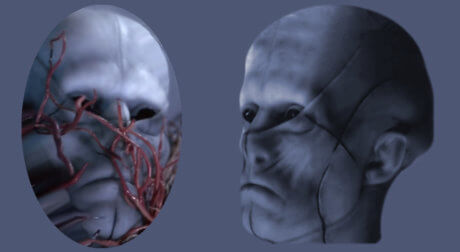
Indeed, the female character is herself transformed into a figure that looks very much like the male figure. This could indicate a successful integration of the feminine and masculine sides of our psyche.
Another way of interpreting this is that the Spirit is just the feminine counterpart of the Soul, and vice-versa (i.e., Soul and Spirit are two sides of the same coin), an idea often represented in alchemical drawings by an ouroboros eating its own tail.
Another interesting occurrence in the music video are the vapours coming off the male figure – the Soul.


In Alchemy, during the White Phase, the material that has gone through the previous steps of Separation and Dissolution, ultimately releases a cloud of white vapour as part of the purification process.
This scene might symbolise this process – purification has taken place and Soul and Spirit are ready to unite. What follows next is the Sacred Marriage.
I know the pieces fit
After we unite Soul and Spirit, we will have created a new Body.
In the music video, this is symbolised by the merging of the two figures, which culminates in the creation of an hermaphroditic being.


Interestingly, the two-headed hermaphrodite is often the symbol of Salt/Body which is the result of the union of Sulfur/Spirit and Mercury/Soul – the Sacred Marriage.
Also, note the fire that is produced as the result of the fusion, and which appears when the two-headed figure is created. As mentioned above, the element of fire is the most important element of transformation in the alchemical context.
In this final scene, the association between transformation and fire couldn’t be more obvious. I believe this to be one of the most telltale clues that a milestone has been reached in the alchemical journey towards the Philosopher’s Stone.
I like to think that Schism is all about intrapersonal communication.
Regardless of what your approach is to understand yourself and your place in this world (e.g., cognitive-behavioural, psychoanalysis, spiritual or religious), we should aim to understand and integrate discordant aspects of our psyche that are in the way of personal growth.
Only when we learn to identify and accept our true feelings, can we achieve that much needed psychic balance. Hence, the predominance of the word “communication” in the song.
Very few people would disagree that they are not in full control of their feelings. We might feel lost in life, we regret certain decisions we have made, we are angry at unsuccessful ventures, and/or dissatisfied with our emotional lives.
Some schools of psychology are firm advocates we need to introspect and listen to our inner self.
This simply means to be attentive to our feelings, work them out (e.g., by practising meditation, with the help of a therapist, by simply introspection), and learn to live with them, even if it starts to get outside our comfort zone.
Unfortunately, more often than not, we deliberately choose not to listen, and simply ignore or repress messages from our inner world – we form a psychological barrier.
If this “schism” is maintained, we experience a disrupted self, which could be quite detrimental to our health and relationships with others.
If, on the other hand, we choose to listen and communicate with our unconscious mind, we persevere, and will be closer in our long journey to secure that much-sought Philosopher’s Stone.
It’s perhaps interesting that Schism was chosen to be song number 5, which, in alchemy (and in many other traditions), represents perfection.
Even more interesting is the alchemical idea that it is through the Philosopher’s Stone that the Quintessense (the active essence present in all substances) is extracted.
The Quintessence is the fifth element that is created from the operation of Conjunction (quint comes from the Latin word quīntus, which means “fifth”), and, for some, it is simply another name for the Philosopher’s Stone.
Perhaps it is just a coincidence.
However, given the preponderance of numerical curiosities fans have been finding in Tool’s songs, I thought I would add another to the list :).
See you in the next article!
Books:
Hauck, D. W. The Complete Idiot’s Guide to Alchemy.
Websites:
Spirit in Transition (search for the Alchemy posts)
Learn Religions (search for the Alchemy posts)
Excellent research and concise explanations, your analysis is very accurate given I was able to discern the allegories and symbolism to the same conclusions. There are many facets to the genius of this song and music video that were clearly designed to be played together as inseparable as the constituents of successful synthesis alchemy describes. The fact Maynard’s history reads like a tailored spook (he is one), he declares himself for the legion by signaling the hidden hand, plays from behind a curtain during some shows, the man does a service visualizing these hermetic principles and deep esoteric concepts though at what cost to divulge so clearly I can’t and would rather not imagine.
Hi Ellis! Great comment, thanks for sharing! Indeed, I’ve always felt that the album Lateralus is in itself a description of an entire alchemical journey. However, I also believe that the concepts present in Tool’s songs (including Schism) probably extend beyond Hermeticism and other esoteric teachings. I once watched an interview with Maynard in which he explained quite articulately the nuances of – if my memory doesn’t fail me – Saturn’s orbit, and how it related to “The Grudge”. Tool’s exceptional ability to combine these different pieces of knowledge, and create such harmonious music is truly unique in my view. Entire PhDs could be written about this 🙂